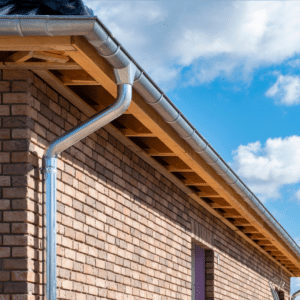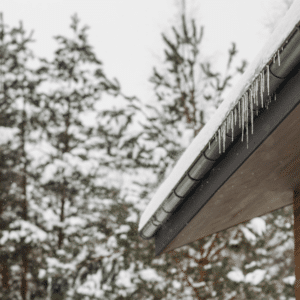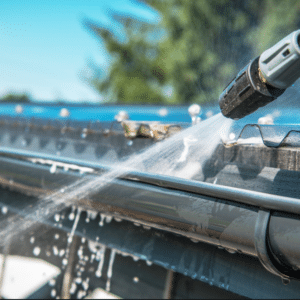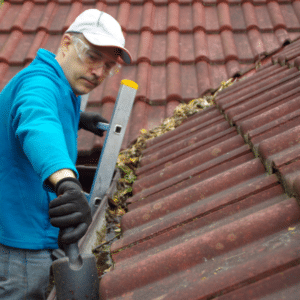Maintaining your gutters is essential to protect your home from water damage and preserve its value. This article will guide you on when to inspect gutters and how often, ensuring you have the knowledge to keep your home safe and in top condition. With expert insights, you can confidently manage your gutter maintenance.
Gutters should be inspected at least twice a year, ideally in spring and fall. In addition, inspect gutters after significant weather events, when you notice signs of blockage or damage, and if you live in areas with heavy foliage. Regular inspections prevent damage and costly repairs, ensuring your gutters function effectively.
Key Takeaways:
- Schedule regular inspections to avoid structural damage and maintain your home’s aesthetic appeal.
- Plan gutter inspections according to seasonal weather patterns for optimal performance.
- Act immediately when you notice signs like sagging, pooling water, or visible debris.
- Inspect gutters at least twice a year, and more frequently in areas with heavy tree coverage or extreme weather.
- Opt for professional services to ensure thorough and effective gutter maintenance.
We have more valuable information to help you understand when to inspect gutters and how often. Keep reading to discover expert tips and practical advice to maintain your home’s gutter system.
The Importance of Regular Gutter Maintenance
Gutter maintenance is often overlooked, but it’s essential for preventing structural damage and preserving your home’s aesthetics. Regular inspections help identify issues before they escalate, saving you from expensive repairs. Clean, functioning gutters protect your foundation, walls, and landscaping from water damage. Neglecting gutter maintenance can lead to blockages, causing water to overflow and damage your home’s exterior. This can result in mold growth, erosion, and even basement flooding. By understanding when to inspect gutters and how often, you can ensure your home remains protected.
Regular gutter inspections offer numerous benefits. They prevent water damage to your home’s foundation, walls, and roof. Early identification of issues can save you from costly repairs. Clean gutters also enhance your home’s curb appeal and overall value. Furthermore, well-maintained gutters ensure proper drainage, directing water away from your home and protecting your landscaping. Understanding the importance of regular gutter maintenance helps you make informed decisions to keep your home safe and aesthetically pleasing. According to FEMA, just one inch of water can cause up to $25,000 in damage, highlighting the importance of preventive measures like gutter maintenance.
Seasonal Changes and Gutter Health: Best Practices for Every Season
Seasonal changes significantly impact your gutters. Each season presents unique challenges, and adjusting your inspection schedule accordingly ensures optimal gutter performance. In spring, inspect gutters for debris left from winter, such as leaves and twigs, which can cause blockages. Check for signs of winter damage like sagging or separated joints, and ensure gutters are securely attached to the house. Preparing your gutters for summer thunderstorms involves clearing blockages and inspecting for wear and tear.
Fall brings an abundance of leaves that can quickly clog gutters. Regular inspections during this season are crucial to prevent blockages and ensure proper drainage. Consider installing gutter guards to reduce cleaning frequency. Winter poses unique challenges due to snow and ice. Inspect gutters for ice dams, which can cause significant damage if not addressed. Ensure gutters are clear to prevent blockages that can lead to water overflow when snow melts. By following best practices for each season, you can maintain your gutters effectively.
Inspect Gutters: Key Signs It’s Time for a Checkup
Knowing when to inspect gutters involves recognizing key signs that indicate it’s time for a checkup. Visible debris and blockages are clear indicators. If you notice leaves, twigs, or other debris accumulating in your gutters, it’s time for an inspection. Blockages can prevent proper drainage and cause water to overflow. Sagging gutters indicate they are overloaded with debris or not securely attached. This can lead to water spilling over the sides and damaging your home’s foundation.
Pooling water around your foundation or in the gutters suggests improper drainage, which can cause significant damage if not addressed promptly. Exterior damage such as stains, peeling paint, or mold growth on your home’s exterior are signs that your gutters are not functioning correctly. Regular inspections can prevent these issues from escalating. While you can conduct minor checks, a professional assessment ensures a thorough inspection. Experts can identify issues you might miss and provide comprehensive maintenance, ensuring your gutters remain in top condition. According to Forbes, the average cost of water damage restoration is between $1,300 and $5,600, highlighting the importance of timely maintenance.
How Often Should You Inspect Your Gutters? Understanding Frequency
Understanding how often to inspect gutters is crucial for effective maintenance. Generally, it’s recommended to inspect gutters at least twice a year, during spring and fall. However, specific circumstances may require more frequent inspections. Homes surrounded by trees may need more frequent inspections to clear fallen leaves and debris. Areas with extreme weather conditions, such as heavy rain or snow, require more frequent inspections. According to the National Weather Service, clearing loose and clogged rain gutters is essential to prevent water damage during severe weather conditions.
Older gutters may need more frequent inspections to ensure they remain in good condition. Biannual inspections during spring and fall are ideal for thorough inspections. Additionally, inspect gutters after significant weather events to check for damage or blockages. If your home is in an area with heavy tree coverage or extreme weather, consider inspecting every few months. Understanding the recommended inspection schedule helps you keep your gutters in optimal condition, protecting your home from potential damage.
Professional Gutter Inspections: Ensuring Comprehensive Maintenance
Opting for professional gutter inspections ensures thorough and effective maintenance. Professionals have the expertise and tools to identify and address issues that might be missed during a DIY inspection. They have the knowledge to identify and fix problems that may go unnoticed by homeowners. A professional inspection covers all aspects of gutter maintenance, from cleaning to repairs. Professionals can safely access hard-to-reach areas and handle potential hazards such as mold or pests.
A comprehensive cleaning involves removing all debris and blockages. A detailed inspection checks for signs of damage, wear and tear, and ensures proper attachment. Maintenance and repairs address any issues found during the inspection, such as fixing leaks or reattaching loose gutters. Choosing a reliable gutter maintenance service is crucial for effective maintenance. Look for companies with positive reviews, proper licensing, and a solid reputation. Regular professional inspections can extend the lifespan of your gutters and ensure your home remains protected.
Ready to ensure your gutters are in peak condition? Whether you need residential gutter services or commercial gutter services, Intrawest Seamless Gutter is here to help. Contact us to get a quote today and experience the difference professional gutter maintenance can make for your property.
How do I know if my gutters need replacing instead of just cleaning?
If your gutters have cracks, holes, or rust spots, it might be time to replace them. Also, if you notice water damage or pooling water around your home’s foundation despite regular cleaning, or if the gutters are sagging and pulling away from the house, replacement may be necessary.
What tools do professionals use to inspect and clean gutters?
Professionals typically use ladders, gutter scoops, and high-pressure water hoses for cleaning. They also use inspection cameras to check for blockages and damage. Safety gear, such as harnesses and gloves, is essential for protecting themselves while working at heights.
Can clogged gutters affect my roof’s lifespan?
Yes, clogged gutters can lead to water backing up and seeping under your roof shingles, causing rot and damage. This can significantly reduce your roof’s lifespan and lead to costly repairs. Regular gutter maintenance helps prevent these issues and protects your roof.











